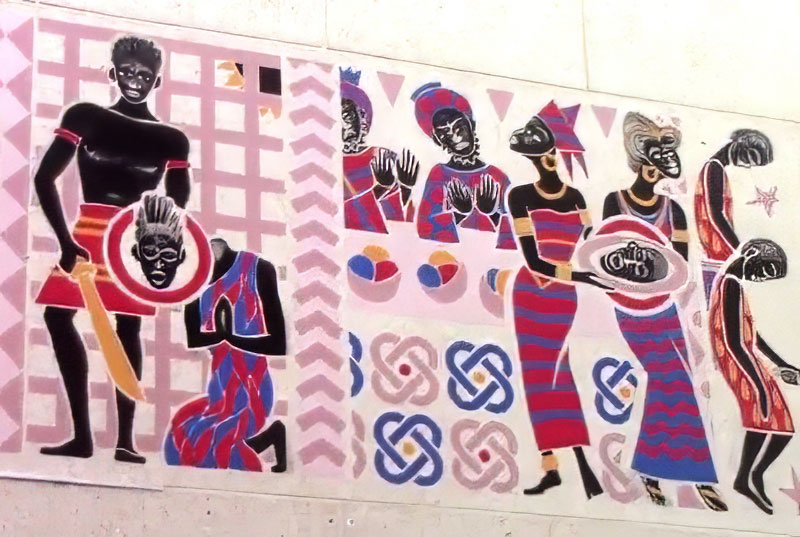Keur Moussa means ‘House of Moses’. The House of Moses Monastery was founded in Senegal in Western Africa in 1961 by French monks from the order of St Benedict. The monastery is known for its art, music and its service with both African and European forms. You can see this in the following video.
Today, Keur Moussa has 30 to 40 brothers. The abbey also sponsors an elementary school and dispensary, run by sisters and laypeople. The monks themselves live from the work of their hands, tending fruit trees, making cheese, and hand-crafting their musical instrument known as koras.
The altar has images on both the wall and ceiling.

It also has one of the unique Death of John the Baptist depictions.
Robert Harding, photographer, took a series of photos there. This one is “Head of Baptist, mural by Father George Saget (1963) fits in with the Gospel on July 14.
This image shows not just the execution but a diverse crowd reaction. People on the far right are very sad and withdrawn, a natural reaction. Those two to the left have their hands up. This can mean several things – they don’t want to be associated with it, they are appalled by it, they are reviled by it. They have at least confronted it.

A leading western painting on the subject “The Beheading of John the Baptist” by Caravaggio includes fewer crowd reactions. The servant girl taking care of the head doesn’t seem affected. There is the sense of horror by one bystander but that’s it.

Music plays an important role in the Abbey and in worship. The monks adapted the Catholic mass to include traditional African musical instruments, making their message more appealing to the local people.
The instrument they use is called the the Kora. It is a mix between a harp and a lute, traditionally holding twenty-one strings that run in two divided ranks and are held in notches on a bridge, and a resonating chamber built from a large calabash cut in half and covered with cow skin. Koraists hold the instrument upright, using the thumb and index finger of both hands to pluck the strings in polyrhythmic patterns. Some links:
1. Kora music
2. An extended story on monastery
